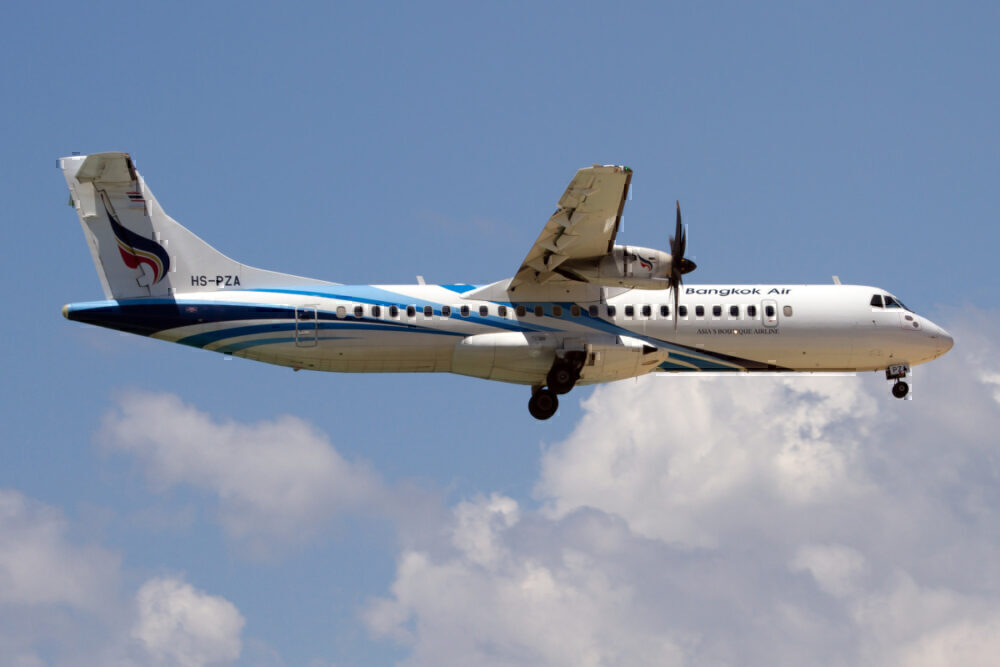Aircraft have wings attached to the fuselage in one of two main ways – either above the fuselage (high wing) or below the mid-point of the fuselage (low wing). Large commercial jet aircraft tend to have low wings, and for a good reason. But others, including smaller training aircraft, propeller aircraft, military, and cargo aircraft, often have high wings. There are many differences, as this article explores.

High Wing or Low Wing
Most aircraft you see today have either high wings above the fuselage or low wings partway down the fuselage. There are, of course, other options possible, such as biplanes with two wings.
It is not just the wing location that differs. The two wings type are also designed differently. High wings tend to be flatter, whereas low wing will have an upwards angle to them (known as dihedral). This is to compensate for the increased stability offered by high wings (this is based on the relative location of the center of mass and the center of lift. See this interesting post on the Pilot Mall blog for more discussion of this).

The choice of wing is mainly a practical one. There is some effect on performance, with low wing typically offering better aerodynamics and performance. But the main differences come down to the physical structure of the resulting aircraft.
One important thing to note about wings is that they are not merely the ‘external’ attachments you see. Aircraft require additional structures to support the wing, and as well as the external wings, there is a central wing box connecting the wings to the fuselage, and taking much of the load of the aircraft.
This wing box is an essential factor – it has to go somewhere, and this affects the interior of the aircraft. In a low wing aircraft, this will be low down the fuselage (below the passenger cabin and manageable as part of the cargo hold). The wings and wing box can also be used to house part of the landing gear structures.
On a high wing aircraft, it will be above the fuselage, allowing an open and unencumbered fuselage perfect for loading cargo.

Stay informed: Sign up for our daily and weekly aviation news digests.
Differences between low and high wings
Some of the main differences in aircraft structure and performance include:
- Cabin space. As discussed, high wings allow the inside of the fuselage to be free of additional structures, offering more flexible use of space.
- Impact on landing gear design. On a low wing aircraft, the landing gear can usually be built into the same structure. On a high wing aircraft, additional gear structures need to be added.
- Absorbing landing force and safety. Low wings offer more ability to absorb landing forces through the low wing structure and wing box/landing gear. Low wings are also considered safer in the event of an emergency or gear up landing, as the wings will take some of the impacts. They are also safer in a water landing, as they will keep the fuselage above water, as well as provide an exit route.
- Ground clearance. High wings clearly have more ground clearance. This also keeps the engines further away from loose or rough ground. But conversely, lower-placed engines are easier to access for checks and maintenance.

Low wings suit commercial passenger aircraft
Most large commercial aircraft you see day to day have low wings. This works well with the layout of the cabin, with the passenger compartment above the wing and the separated cargo compartment below, combined with the wing and landing gear structures.
It is also safer, both in emergency landings and in the event of an engine fire. And it is much easier to access the engines and refuel the aircraft during quick turnovers at airports.

But high wing can be common elsewhere
The high wing, with its extra cabin space and high clearance especially, does, however, suit several types of aircraft, including:
Dedicated cargo aircraft. Both civilian and military transport aircraft can benefit from the flexible loading options of a single large cargo compartment. Of course, cargo variants of passenger models (such as the 777 and 747 maintain low wings). One of the problems of the proposed A380 freighter version was limitations in the offered cargo bay.

Military aircraft. Heavy military aircraft often favor high wings for both the cargo flexibility and the operational advantages in rough or unpaved terrain.
Passenger aircraft requiring higher clearance. One area where high wings can be useful in a passenger aircraft is when operating in rough terrain or unpaved runways. It offers more clearance and keeps the engine further from the dusty ground. It also allows for larger flaps, helping performance on short field takeoffs and landings. The BAe 146 and ATR series are good examples of this.

Smaller light aircraft. Several types of small, two to four-seat, passenger aircraft have high wings. The choice of a high or low wing in these aircraft is very different from large aircraft, and the choice often comes down to pilot preference. High wings here can have several advantages, including better vision, more ground clearance, and even more shading of the cabin.

Would you like to share any thoughts on high wing and low wing differences? There are many other advantages and disadvantages. Feel free to discuss these in the comments.
from Simple Flying https://ift.tt/3w2JL8p
via IFTTT
Comments
Post a Comment